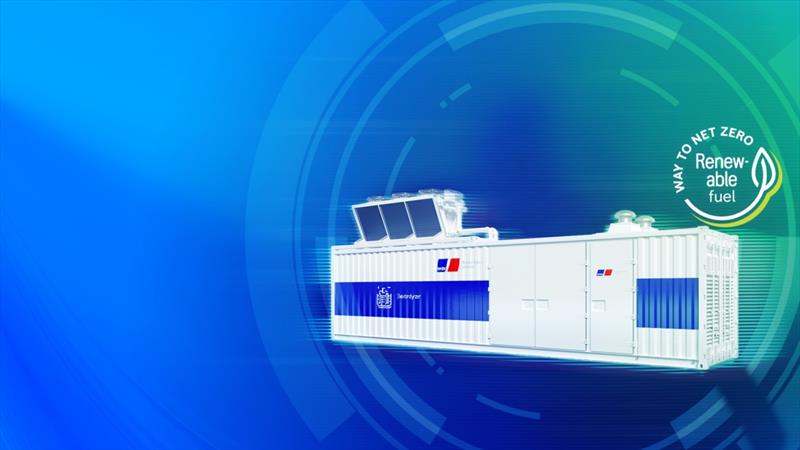
Hydrogen Electrolysis on a grand scale
by Wolfgang Boller 7 Aug 2022 21:29 PDT

Rolls-Royce develops mtu electrolyzers © Rolls-Royce Power Systems
Rolls-Royce now developing mtu hydrogen electrolyzer and investing in Hoeller Electrolyzer to produce low-cost hydrogen using green electricity.
Hydrogen is the fuel of the future. The only question is: where are we going to get the huge quantities needed to overcome the climate crisis? The answer is electrolysis - lots of electrolysis. This electrochemical process uses electricity to break water into its constituent parts: hydrogen and oxygen.
Rolls-Royce is developing mtu electrolyzers with outputs of up to 2 MW that can be scaled up to over 100 MW. Now the company has acquired a stake in Hoeller Electrolyzer, a specialist company that develops and manufactures the cell stack, the core component of the electrolyzer. The shared aim of Rolls-Royce and Hoeller Electrolyzer is to develop a solution to produce hydrogen cheaply and on a large scale using green electricity. This is an ideal add-on for an mtu microgrid. It creates the possibility to store and use solar and wind power, thus making an important contribution to the energy transition.
Large-scale electrolysis works on the same principle as those electrolysis experiments in physics and chemistry lessons, in which two electrodes are suspended in a water bath: In an electrolyzer, water is broken down into its components hydrogen and oxygen by an electrochemical reaction. In contrast to the electrolysis experiment from physics or chemistry lessons, however, a membrane is used here instead of electrodes. Current is passed through this membrane into the water, producing hydrogen at the negative cathode and oxygen at the positive anode. This process takes place in a so-called cell, hundreds of which are stacked on top of each other in such a way that they produce the required amount of hydrogen as economically and effectively as possible.
Why hydrogen?
"Because it contains no carbon and cannot produce harmful carbon dioxide (CO2) when powering fuel cells or hydrogen engines. Sounds fairly straightforward. The trick, though, is to ensure that no CO2 is produced during production of the hydrogen - as is partly the case when hydrogen is obtained from natural gas," explained Armin Fürderer, who heads up net zero solutions at Rolls-Royce Power Systems.
This calls for 'green' hydrogen produced in ways that give off no carbon emissions, and that's where solar parks and wind turbines come in - supplying the electrolyzers with electricity generated with zero CO2 emissions. The collected hydrogen from the electrolyzers can be used in a variety of ways: In fuel cells, the hydrogen is used to generate electrical energy again as needed. Or it is used to power hydrogen engines. Either way, electricity can be fed into the grid or used to power vehicles or ships. Alternatively, the green hydrogen can be used in industry and replace so-called gray hydrogen - i.e. hydrogen from natural gas.
Combustion engines run climate-neutral
Another possibility is to use further energy from renewable sources to produce methanol from hydrogen and CO2 in the air. If this methanol is used in a future mtu methanol engine, CO2 is released again, but in quantities equivalent to those extracted from the air during the methanol production - meaning the whole process is 'net zero carbon'. The synthesis of other sustainable fuels such as e-kerosene or e-diesel is also possible with hydrogen. Thus, other sectors such as heavy-duty transport or aviation can also be decarbonized.